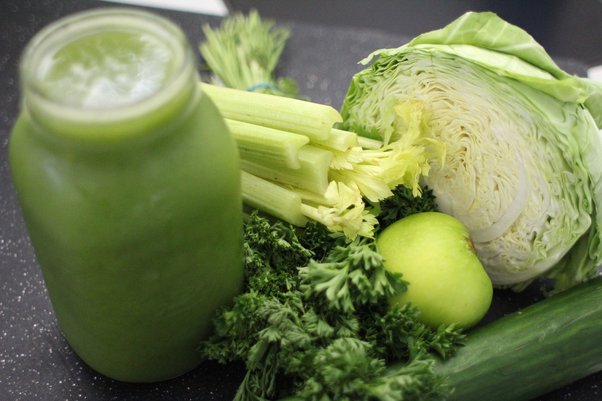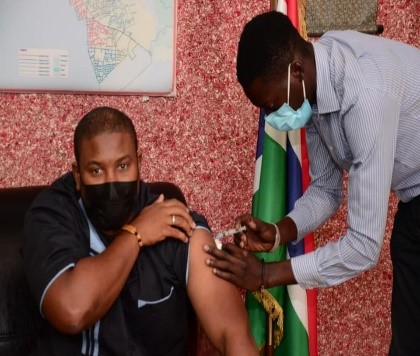By Prof. Raphael Nyarkotey Obu
In my previous article on cabbage, I did mention that cabbage juice is loaded with an important compound called vitamin U that heals ulcers. In this article, I will explain other benefits that vitamin U in cabbage treats according to science. Vitamin U is available not only as a supplement but also found naturally in various foods, particularly cruciferous vegetables like cabbage, broccoli, Brussels sprouts, and kale. Plus, cosmetics companies may add it to certain creams, serums, face masks, and other products.
Vitamin U, Science
Protect lungs, liver, and kidneys
Studies confirmed that Vitamin U can protect our lungs, liver, and kidneys from damage.
In an animal study, Sokmen et al.(2012) found that vitamin U could support liver damage caused by the common anti-seizure medication valproic acid.
Another rat study, by Gezginci-Oktayoglu et al.(2016) found that vitamin U given to rats experienced less severe kidney damage after receiving valproic acid than those given no vitamin U. Vitamin U also decreases markers of inflammation.
Oktay et al.(2017) animal study also found that vitamin U could reduce lung damage resulting from epileptic seizures.
Lower cholesterol and triglyceride levels
It has been propounded that vitamin U supplements couldreduce cholesterol and triglyceride levels, but evidence still is limited. Lee et al.(2012) test-tube study suggests that vitamin U could avert the formation of fat cells and reduce triglyceride levels, but limited human studies are available.
An old 8-week study by Nakamura et al.(1981) in humans, prescribed 1.5 grams of vitamin U per day found no change in triglyceride levels, higher HDL (good) cholesterol, and an almost 10% reduction in total cholesterol. As such, more human research is needed.
Aid wound healing and skin protection
Some studies have found that Vitamin U may offer some protection against the sun’s ultraviolet (UV) rays, as well as expedite wound healing. For instance, test-tube and animal studies( Kim et al. 2010; Kim et al. 2015; Kim et al. 2018; Watson et al. 2016) found that using vitamin U directly inwounds could speed wound healing. In addition, vitamin U could protect against burns and other damage caused by UV rays. Due to this, certain cosmetics are formulated with vitamin U.
Side effects and precautions
Vitamin U is likely safe when eaten directly from whole foods. However, little is known about its safety or potential side effects in supplement form.
Therefore, it’s likely safest to rely on vitamin-U-rich foods like cabbage, broccoli, Brussels sprouts, and kale to boost your intake of this compound.
According to the European Chemicals Agency, vitamin U may cause eye, skin, or lung irritation if it comes into direct contact with these organs. Thus, you may want to use caution with skin care products containing this compound.
Vitamin-U-rich foods like cabbage, broccoli, Brussels sprouts, and kale are widely considered safe to eat during pregnancy and breastfeeding.
Yet, little is known about the safety of vitamin U in supplement form. Therefore, you should consider avoiding these supplements if you’re pregnant or breastfeeding.
One old human study by Nakamura et al.(1981) used 1.5 grams of vitamin U for 8 weeks.
Overdose
Alina Petre, (2020) explained that so far, there have been no reported cases of vitamin U overdose.
An overdose is very unlikely if you consume this compound exclusively from whole foods. Keep in mind that studies have not yet examined the effects of high vitamin U intake from supplements.
This makes it impossible to rule out the possibility of a vitamin U overdose.
As such, more research is needed to understand whether an overdose is possible, the signs and symptoms associated with it, and the safest way to treat it.
There isn’t enough scientific information available to determine whether vitamin U interacts with any other supplements or drugs.
People taking other supplements or medicines should discuss vitamin U with their healthcare provider before trying it.
NB:
Prof. Nyarkotey has strict sourcing guidelines and relies on peer-reviewed studies, academic research institutions, and medical associations to justify his write-ups. My articles are for educational purposes and do not serve as Medical advice for Treatment. I aim to educate the public about evidence-based scientific Naturopathic Therapies.
The writer is a Professor of Naturopathic Healthcare, a Medical Journalist, and a science writer. President, Nyarkotey University College of Holistic Medicine & Technology (NUCHMT)/African Naturopathic Foundation, Ashaiman, Ghana. Currently BL Candidate at the Gambia Law School, Banjul. E. mail: professor40naturopathy@gmail.com.
References
1. Sokmen BB, Tunali S, Yanardag R. Effects of vitamin U (S-methyl methionine sulphonium chloride) on valproicacid induced liver injury in rats. Food Chem Toxicol. 2012 Oct;50(10):3562-6. doi: 10.1016/j.fct.2012.07.056. Epub2012 Aug 4. PMID: 22889891.
2. Gezginci-Oktayoglu S, Turkyilmaz IB, Ercin M, YanardagR, Bolkent S. Vitamin U has a protective effect on valproicacid-induced renal damage due to its anti-oxidant, anti-inflammatory, and anti-fibrotic properties. Protoplasma. 2016 Jan;253(1):127-35. doi: 10.1007/s00709-015-0796-3. Epub 2015 Mar 24. PMID: 25802006.
3. Oktay S, Bayrak G, Alev B, Ipekci H, Ustundag UV, Turkyilmaz IB, Pisiriciler R, Emekli-Alturfan E, Tunali-Akbay T, Yanardag R, Yarat A. The effect of vitamin U on the lung tissue of pentyleneterazole-induced seizures in rats. Naunyn Schmiedebergs Arch Pharmacol. 2018 Feb;391(2):177-184. doi: 10.1007/s00210-017-1447-3. Epub 2017 Dec 7. PMID: 29218374.
4. Lee NY, Park KY, Min HJ, Song KY, Lim YY, Park J, Kim BJ, Kim MN. Inhibitory Effect of Vitamin U (S-Methylmethionine Sulfonium Chloride) on Differentiation in 3T3-L1 Pre-adipocyte Cell Lines. Ann Dermatol. 2012 Feb;24(1):39-44. doi: 10.5021/ad.2012.24.1.39. Epub 2012 Feb 2. PMID: 22363154; PMCID: PMC3283849.
5. Nakamura N, Uzawa H, Kanazawa K, Tamai Y, Tashiro Y, Koide M. Hypolipidemic effect of L-form S-methylmethionine sulfonium chloride in man. Arzneimittelforschung. 1981;31(4):725-9. PMID: 7195721.
6. Kim WS, Yang YJ, Min HG, Song MG, Lee JS, Park KY, Kim JJ, Sung JH, Choi JS, Cha HJ. Accelerated wound healing by S-methylmethionine sulfonium: evidence of dermal fibroblast activation via the ERK1/2 pathway. Pharmacology. 2010;85(2):68-76. doi: 10.1159/000276495. Epub 2010 Jan 21. PMID: 20110751.
7. Kim WS, Seo HM, Kim WK, Choi JS, Kim I, Sung JH. The Photoprotective Effect of S-MethylmethionineSulfonium in Skin. Int J Mol Sci. 2015 Jul 28;16(8):17088-100. doi: 10.3390/ijms160817088. PMID: 26225962; PMCID: PMC4581185.
8. Kim WS, Kim WK, Choi N, Suh W, Lee J, Kim DD, Kim I, Sung JH. Development of S-MethylmethionineSulfonium Derivatives and Their Skin-Protective Effect against Ultraviolet Exposure. Biomol Ther (Seoul). 2018 May 1;26(3):306-312. doi: 10.4062/biomolther.2017.109. PMID: 29129045; PMCID: PMC5933898.
9. Watson M, Holman DM, Maguire-Eisen M. Ultraviolet Radiation Exposure and Its Impact on Skin Cancer Risk. Semin Oncol Nurs. 2016 Aug;32(3):241-54. doi: 10.1016/j.soncn.2016.05.005. Epub 2016 Jul 29. PMID: 27539279; PMCID: PMC5036351.





